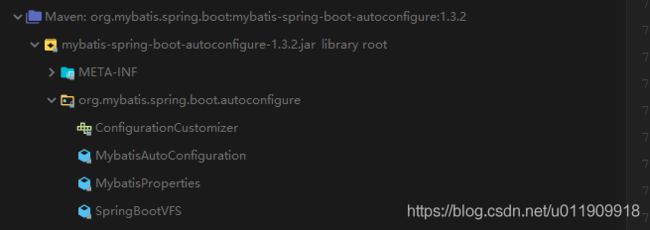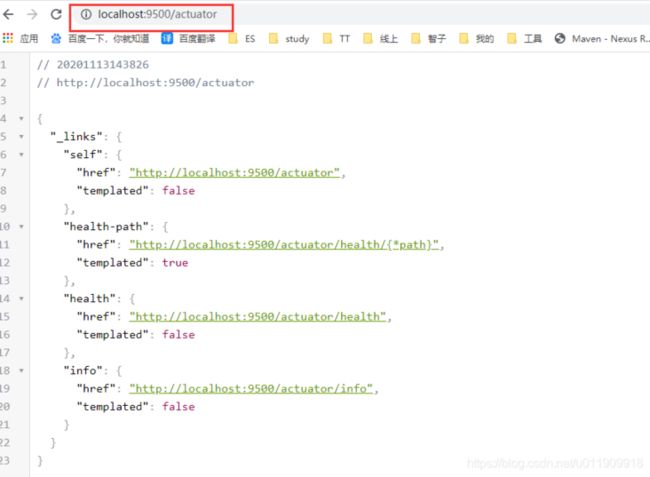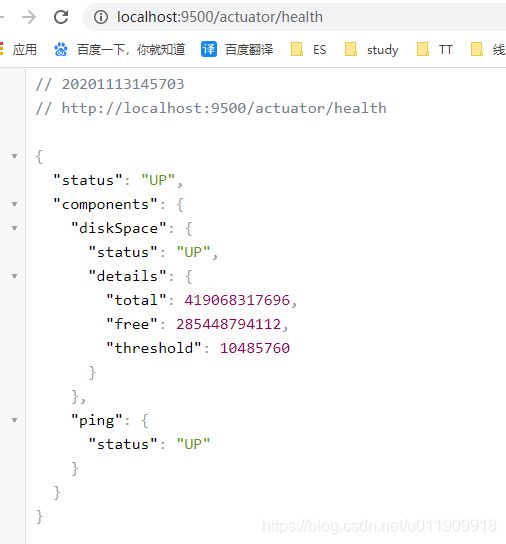来源:blog.csdn.net/u011909918/article/details/109647196
前言
先透露一下,四大组件分别是:starter, autoconfigure, CLI 以及actuator。下面我们就来详细介绍一些他们有什么用。
一、Spring Boot Starter
1.1 Starter的应用示例
org.springframework.boot
spring-boot-starter-thymeleaf
org.mybatis.spring.boot
mybatis-spring-boot-starter
1.3.2
Spring Boot 基础就不介绍了,推荐下这个实战教程:
https://github.com/javastacks...
在我们的Spring Boot项目种的POM文件中总会看到这两种依赖:
spring-boot-starter-xxx 和 xxx-spring-boot-starter。
这就是spring boot的四大组件之一的starter。
a、spring-boot-starter-thymeleaf
b、mybatis-spring-boot-starter
两种starter的区别就是 >>
- 官方提供的starter是这样的:spring-boot-starter-xxx
- 非官方的starter是这样的:xxx-spring-boot-starter
其中xxx就是我们想要依赖的组件或者jar包。上例就是我们spring boot用来引入thymeleaf引擎和mybatis框架所配置的依赖。引入之后通过简单的约定配置就可以正常使用。比如:
Thymeleaf引擎约定配置:
##前端引擎配置
spring:
thymeleaf:
enabled: true
servlet:
content-type: text/html
mode: HTML
## 页面前缀
prefix: classpath:/templates/
## 后缀
suffix: .htmlMybatis约定配置:
mybatis:
mapper-locations: classpath:mapper/*.xml #注意:一定要对应mapper映射xml文件的所在路径
type-aliases-package: com.hi.ld.vo.system # 注意:对应实体类的路径
configuration:
log-impl: org.apache.ibatis.logging.stdout.StdOutImpl下面让我们来看看以前怎么配置thymeleaf。
1.2 Spring Boot之前的Thymeleaf和Mybatis应用
废话不多说,直接上代码:
1.2.1 Thymeleaf配置
a. 添加对应依赖:
org.thymeleaf
thymeleaf-spring5
3.0.11.RELEASE
org.thymeleaf.extras
thymeleaf-extras-java8time
3.0.4.RELEASE
b. bean配置
1.2.2 Mybatis配置
a. 添加对应依赖:
org.springframework.boot
spring-boot-starter-jdbc
org.mybatis
mybatis
org.mybatis
mybatis-spring
b. bean配置
下面的第3, 4步骤就是Mybatis相关配置。第一步是引入资源配置。第二步是配置数据源
1.2.3 小结
a、Starter 帮我们封装好了所有需要的依赖,避免我们自己添加导致的一些Jar包冲突或者缺少包的情况;
b、Starter帮我们自动注入了需要的Bean实例到Spring 容器中,不需要我们手动配置(这个可以说是starter干的,实际上并不是,这里埋个坑,下面解答);
所以: starter包的内容就是pom文件,就是一个依赖传递包。
二、Spring Boot Autoconfigure
2.1 autoconfigure 简介
autoconfigure在我们的开发中并不会被感知,因为它是存在与我们的starter中的。所以我们的每个starter都是依赖autoconfigure的:
当然我们也可以把autoconfig的内容直接放在starter包里边。
a. spring-boot-autoconfigure:
注意:这里有个点,就是官网提供的configure大多数在spring-boot-autoconfigure包里边,并没有单独创建新包。
b、mybatis-spring-boot-autoconfigure
2.2 小结
autoconfigure内容是配置Bean实例到Spring容器的实际代码实现包,然后提供给starter依赖。所以说1.2.3中的b项所说的配置Bean实例到Spring容器中实际是autoconfigure做的,因为是starter依赖它,所以也可以说是starter干的。
所以:autocinfigure是starter体现出来的能力的代码实现
三、Spring Boot CLI
Spring Boot CLI是一个命令行使用Spring Boot的客户端工具;主要功能如下:
- 运行groovy脚本 => 官网2.1
- 打包groovy文件到jar => 官网2.3
- 初始化Spring Boot项目 => 官网2.4
- 其他
先上个官网文档:
https://docs.spring.io/spring...
因为这个我们用的比较少,所以就不多赘述了。个人感觉比较流脾的功能就是命令行直接执行groovy脚本了。
四、Spring Boot actuator
actuator是Spring Boot的监控插件,本身提供了很多接口可以获取当前项目的各项运行状态指标。
官网文档:
https://docs.spring.io/spring...
名词解释:
Endpoints: 需要监控的端点。参考官网第二节官网文档
可用的端点:
下方的是web工程的端点。
使用方法如下:
4.1 添加依赖
Spring Boot 基础就不介绍了,推荐下这个实战教程:
https://github.com/javastacks...
org.springframework.boot
spring-boot-starter-actuator
4.2 配置需要开启监控的端点
management:
endpoint:
health: ## 开启健康监控端点
enabled: true
beans: ## 开启Bean实例监控端点
enabled: true4.3 启动服务并验证
4.3.1 启动结果
4.3.2 查看各个监控信息
浏览器访问(查看监控信息地址):http://localhost:9500/actuator
查看服务健康状态:
其他API查看官方文档了解或者留言一起研究一下,厚着脸皮我也没怎么用过这个。不过下一章介绍了starter和autoconfigure之后我们就可以去研究actuator的源码了。。。。
总结
本章主要介绍了Spring Boot的四大组件的作用,其中主要是starter和autoconfigure,另外的CLI和actuator用的并不多,所以没有仔细介绍。
近期热文推荐:
1.1,000+ 道 Java面试题及答案整理(2022最新版)
觉得不错,别忘了随手点赞+转发哦!









